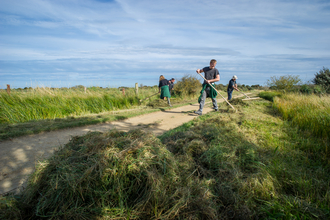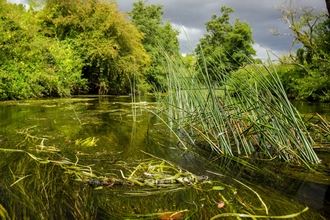Musk Beetle ©Lizzie Wilberforce
Musk beetle
The metallic-green Musk beetle lives up to its name: it releases a musky-smelling secretion when it defends itself. It is a longhorn beetle, so has lengthy antennae. Look for it near wetlands in summer.
Scientific name
Aromia moschataWhen to see
July to AugustSpecies information
Category
Statistics
Length: up to 3.4cmConservation status
Common.



